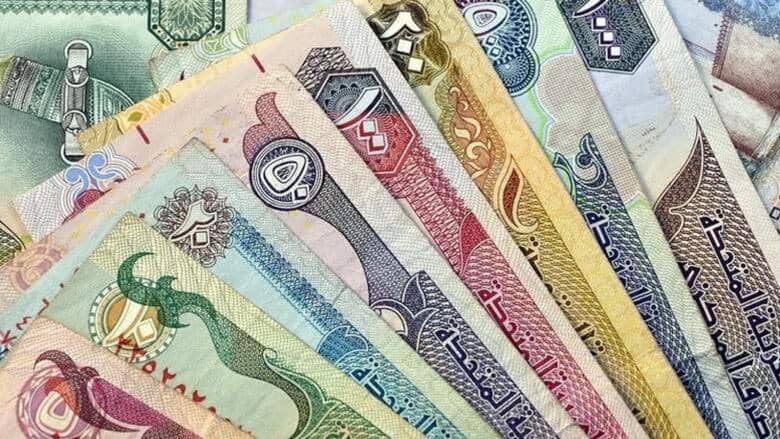Have nothing planned for the weekend? How about a cultural tour of the United Arab Emirates? You can get some inspiration by pulling out your wallet’s brand new polymer notes.
The UAE Central Bank has produced new Dh5, Dh10, and Dh50 notes that include images of some of the UAE’s cultural and historic attractions. So strap in and embark on a journey through four Emirates to learn about the UAE’s history, culture, and heritage.
1. Sheikh Zayed Grand Mosque
The Sheikh Zayed Grand Mosque in Abu Dhabi is one of the world’s largest mosques, and its architecture makes it one of the UAE’s most well-known attractions. A picture of the mosque may be found on one side of the new Dh10 polymer note.
The late Sheikh Zayed bin Sultan Al Nahyan had the mosque erected in Abu Dhabi to establish a cultural refuge that welcomes and inspires people of all backgrounds, according to the travel website visitabudhabi.ae.
The mosque, which was completed in less than ten years, features over 1,000 amethyst and jasper-embedded columns, 82 white marble domes, reflective pools, gold-plated Swarovski chandeliers, and a courtyard with one of the world’s largest marble mosaic artworks. As a result, a visit to the mosque not only gives you a glimpse of Islamic architecture and style, but it also allows you to have a better understanding of the culture.
You can also participate in a 45-minute free cultural tour. You must, however, reserve a time slot on the mosque’s official website, www.szgmc.gov.ae.
Location: Sheikh Rashid Bin Saeed Street, Abu Dhabi
Also read: The new UAE Dh5, Dh10, and Dh50 notes – how do they differ?
2. Wahat Al Karama
Wahat Al Karama, which means “Oasis of Dignity” in Arabic, is a memorial dedicated to Emirati martyrs who gave their lives in the service of their country. Since 1971, it has housed a permanent memorial honoring the UAE’s heroes, including military, police officers, diplomats, and civilians.
The structure is built up of 31 huge aluminum-clad leaning tablets. The memorial’s meaning is clear: one tablet leans against the other, symbolizing the UAE’s leadership’s unity, solidarity, and mutual support for its citizens, residents, and the servicemen and women who safeguard them.
When you visit the memorial, you may watch the Honour Guard march every day before dusk.
It is free to the public and opens every day from 9 a.m. to 10 p.m.
The memorial is direct across the street from the Sheikh Zayed Grand Mosque. There are regular shuttle buses that run to and from the mosque, as well as a pedestrian bridge that connects the two.
3. Etihad Museum
Etihad, which means “union” in Arabic, is a word you’ll hear a lot in the United Arab Emirates. This is due to the fact that it is an important component of the UAE’s founding story. The best way to understand more about this narrative is to visit the Etihad Museum, whose image is featured on the new Dh50 note.
The museum is close to Union House, the site of the signing of the Constitution in 1971. The museum’s goal is to inspire visitors by telling the story of the country’s incredible journey since then.
Location: 1 Jumeirah Street, Al Mina, Dubai
4. Khorfakkan amphitheatre
The Khorfakkan amphitheater, which opened in 2020 and is featured on the Dh10 polymer note, is a cultural monument in Sharjah. The amphitheater includes a natural rock waterfall adjacent to it, which was inspired by Roman construction. The amphitheater and waterfall both face the Khorfakkan shore, making it an ideal location for a family outing.
Location: Rugaylat Road, Al Mudaifi, Sharjah
5. Ajman Fort
The 18th century Ajman Fort, once the Ruler’s palace, today contains a museum that pays tribute to the UAE’s predecessors’ cultural and historical history. It’s visible on the new Dh5 note. The Ajman Heritage District is part of a compound that contains the fort.
Location: Sheikh Abdullah Bin Rashid Street, Al Bustan, Ajman
6. Dhayah Fort
The sole extant hill fort in the UAE is Dhayah Fort, which is depicted on the new Dh5 note.
It was utilized for settlement and fortification by natives throughout the Late Bronze Age (1600–1300 BC). The golden mud-brick fortification with twin peaks was erected in the nineteenth century and renovated in the late 1990s. According to Ras Al Khaimah’s tourism website, visitrasalkhaimah.com, it is an important historical monument where the 1819 conflict between British troops and local Qawasim tribes took place.
If you want to visit the fort, you should do so during the day because there are no lights along the way. Once you reach the top of the hill, you will not only be able to take in a piece of history, but you will also have a great view of the verdant lowlands and the meandering creek in the distance.
